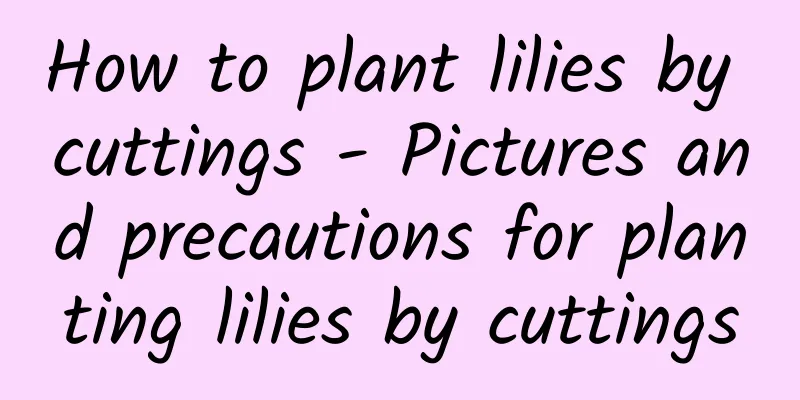Do succulents need fertilization? How to fertilize?

|
We all know that succulents have thick leaves and can store a lot of nutrients. Many flower lovers who buy succulents at this time dare not fertilize them, for fear that too much fertilizer will burn the seedlings and roots. So do succulents need to be fertilized? How to fertilize? Let’s take a look below. 1. Do succulents need to be fertilized? How to fertilize? 1. Succulents need to be fertilized, and the amount of fertilizer needs to be adjusted according to seasonal changes. Succulents grow more vigorously in spring and autumn and have higher demands for nutrients. At this time, phosphorus and potassium compound fertilizers need to be applied to supplement nutrients. Succulents will enter a dormant period in summer and winter, and their absorption capacity will become weaker, so fertilization can be stopped at this time. 2. When fertilizing succulents, it is recommended to choose special fertilizers. This type of fertilizer is scientifically proportioned and causes less harm to succulents. You can also apply decomposed organic fertilizer , which can slowly release its fertility. You can apply a small amount during the dormant period of succulents to avoid fertilizer accumulation and cause certain damage to succulents. 3. The types of fertilizers applied to succulents are different, and the fertilization methods are also different. Organic fertilizer is suitable for use as base fertilizer and can be added to the soil during planting. The diluted liquid fertilizer can be directly poured into the roots of succulents and is generally used during the peak growth period. In addition, foliar fertilizer is generally sprayed on the leaves so that succulents can quickly absorb nutrients. 4. Note that succulents do not require much fertilizer during their growth process. It is sufficient to apply fertilizer once a month in spring and autumn to avoid root burn caused by excessive fertilization. When too much fertilizer is applied, the roots need to be cleaned with clean water in time. If the roots of succulents are found to be burned, the rotten roots need to be trimmed in time and replanted after the wounds are dried. 2. Succulent cultivation techniques and precautions 1. Pay attention to slow seedling growth When you first bring succulents home, you need to keep them in a warm and humid environment and avoid exposing them to strong sunlight. Generally, after about half a month, the plants will grow vigorously, and their condition will be better after they take root and grow slowly. 2. Suitable environment Succulents prefer a warm and dry environment, generally around 20 degrees Celsius. The plants will grow more vigorously, and they need more sunlight during the growing period. Sufficient light can better carry out photosynthesis and synthesize more nutrients, which is very helpful for coloring. 3. Reasonable watering As a fleshy plant, succulents are very drought-resistant and do not require much water, so you should never water them frequently. It is recommended to control the water appropriately. In different environments, the demand for water is different. It is best to wait until the soil is dry before watering. 4. Supplement nutrients Succulents are very hardy and do not require much nutrients, so they must be planted in loose, breathable soil with sufficient nutrients. During the growing period, you can appropriately add some succulent slow-release fertilizer to better promote the growth of new shoots. 5. Cutting propagation Succulents have a strong reproduction ability and can grow many new shoots. You can pick healthy leaves and after the wounds recover, you can spread them flat on the soil surface. Generally, new shoots will grow in half a month. 6. Keep ventilation Succulents like a ventilated and breathable environment, so it is important to open windows frequently for ventilation during the growing season so that they can breathe fresh air better and grow more vigorously. This is very helpful for coloring and avoiding diseases and pests. 7. Prevent diseases In order to prevent the plants from diseases and pests, in addition to ventilation, everyone also needs to pay attention to not getting wet in the rain. It is recommended to use the immersion method to replenish water. If water is poured on the leaves, black rot will occur, affecting growth. That’s it |
<<: How to preserve daffodil bulbs and how to choose daffodil bulbs
>>: How to care for irises and what are the propagation methods?
Recommend
How many times can Chinese cabbage be planted in a year?
Pakchoy is a vegetable native to East Asia, commo...
Pothos cuttings
1. Cutting time The green radish grows very fast ...
Eggplant seedling raising time
1. Seedling raising time The eggplant seedling ra...
Cultivation methods and precautions of Luwei flower
1. Watering It is a succulent plant. Although its...
In which month are sweet potatoes usually planted? When is the planting season?
Which month is suitable for planting sweet potato...
Which month is best to plant autumn potatoes?
Potatoes , also known as potatoes, are an importa...
Is jasmine poisonous? Can jasmine be grown in the bedroom?
1. Is it poisonous? Jasmine is a common flower. A...
What is the difference between Huayueye and Nuhina?
What are the differences between Nuchi, Huayueye ...
What is the best month to plant potatoes?
When to plant potatoes Potatoes are generally pla...
Production and maintenance of grape bonsai
Grape potting pile cultivation You can use seedli...
Indoor plants and flowers suitable for water cultivation
Cactus Speaking of cactus, although it is a droug...
The difference between lettuce and romaine lettuce
1. Different varieties Lettuce head is a ball-sha...
How to solve the problem of yellow leaves of asparagus fern in winter
Sunbathing Asparagus fern is a semi-shade plant. ...
How to prune potted blueberries
When to prune potted blueberries Generally, blueb...
Can honeysuckle be repotted in spring?
1. Can I repot in spring? You can repot the honey...









